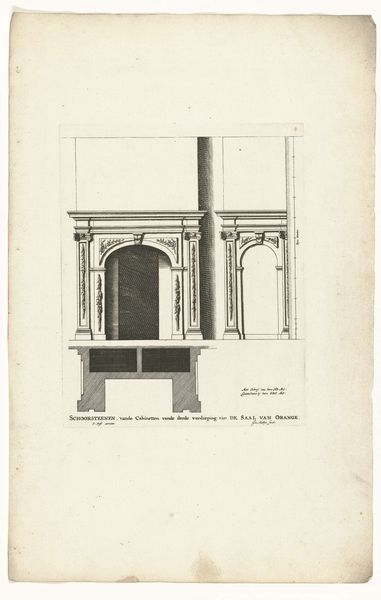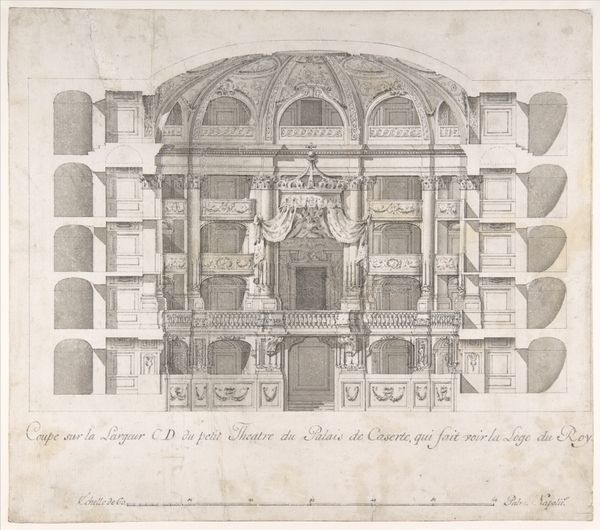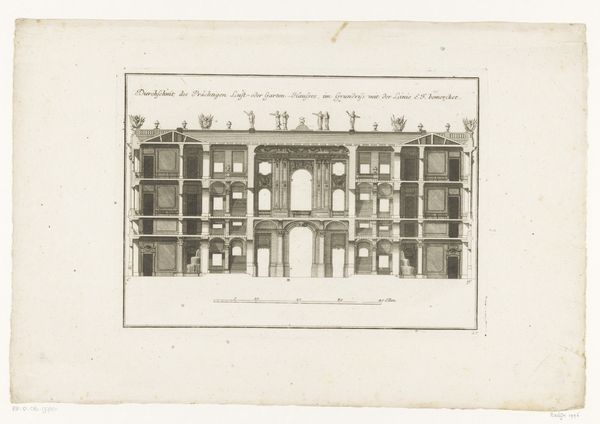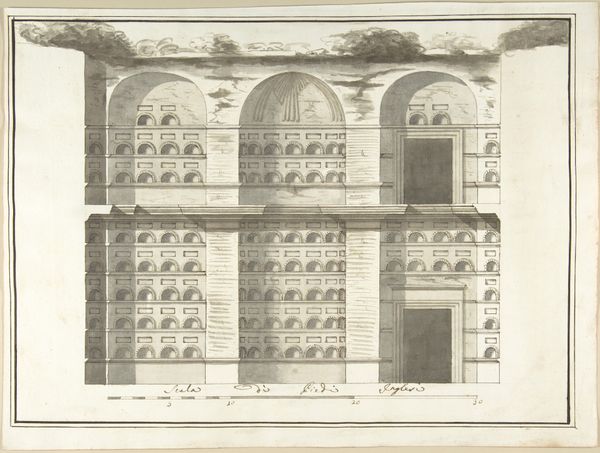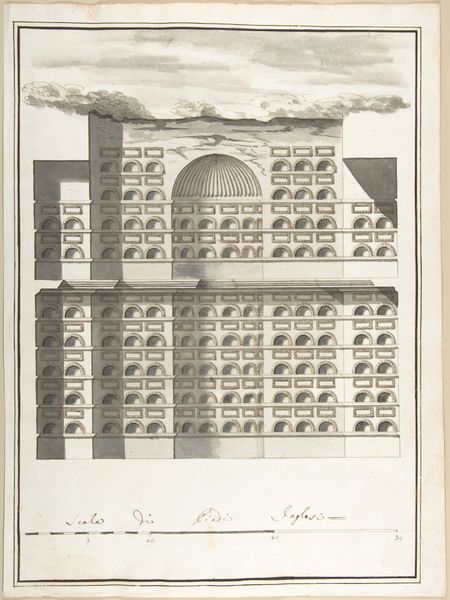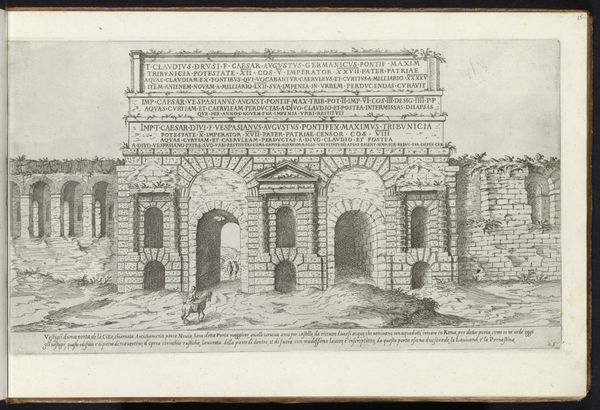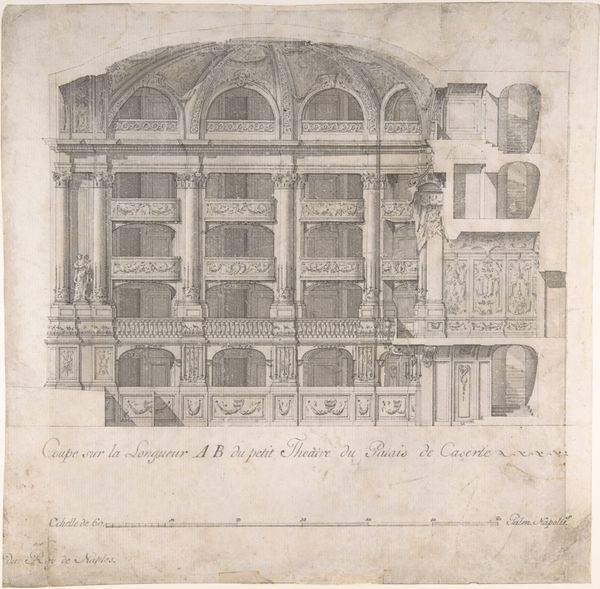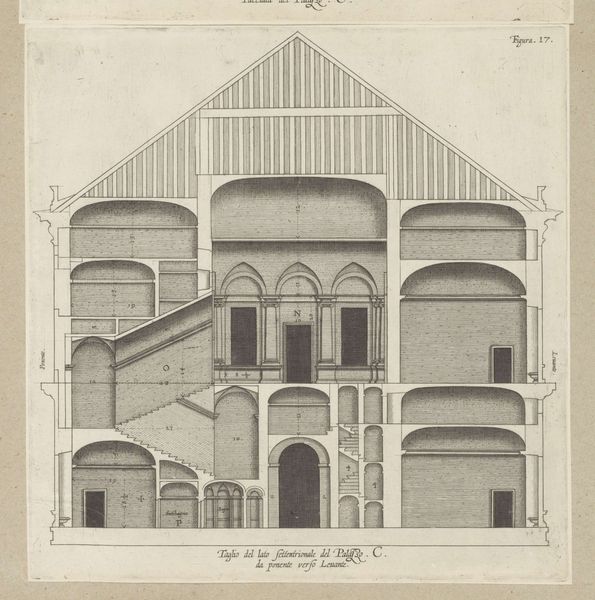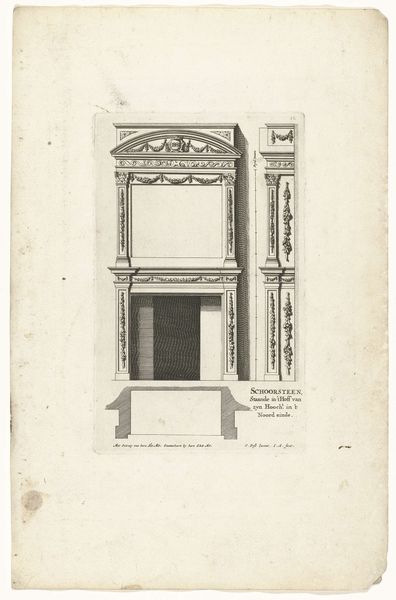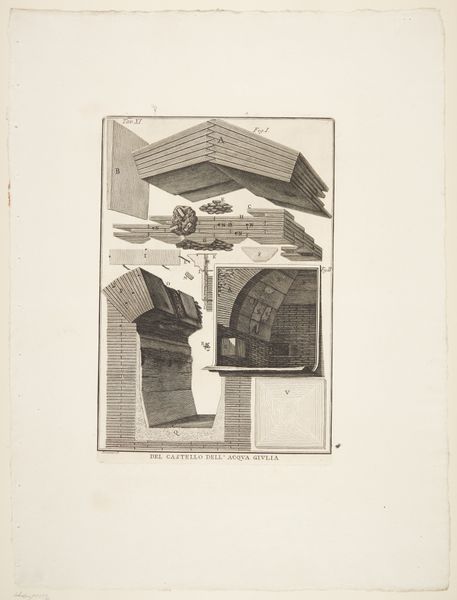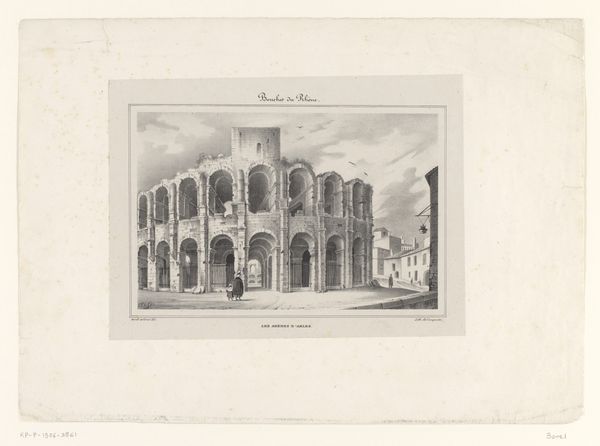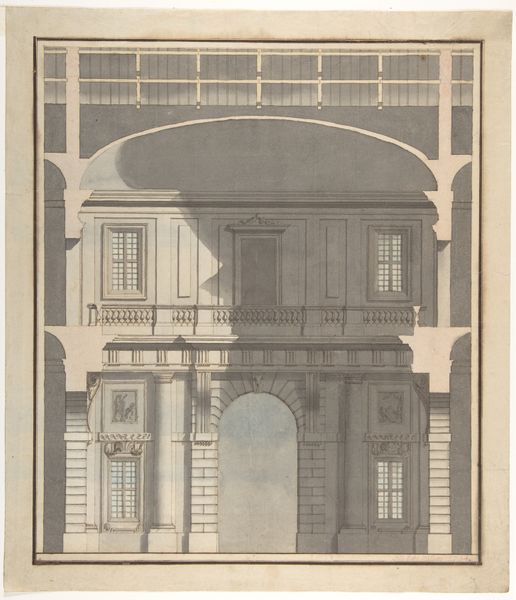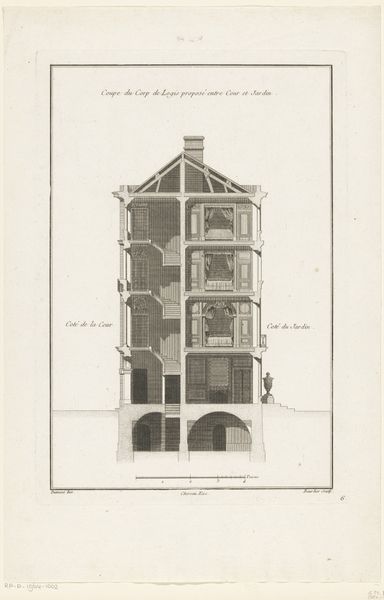
Gevel met renaissancegalerij van Hôtel de Lunati-Visconti in Nancy 1840 - 1851
0:00
0:00
drawing, print, etching, paper, pencil, architecture
#
drawing
# print
#
etching
#
paper
#
11_renaissance
#
pencil
#
cityscape
#
academic-art
#
architecture
Dimensions: height 447 mm, width 311 mm
Copyright: Rijks Museum: Open Domain
Editor: So, this etching from between 1840 and 1851 by Léon Auguste Asselineau depicts the facade with a Renaissance gallery of the Hôtel de Lunati-Visconti in Nancy. It feels incredibly detailed, almost like an architectural blueprint but presented as a work of art. How do you interpret this work, especially considering its historical context? Curator: Well, this isn't just a rendering of a building; it’s an example of the 19th-century fascination with architectural documentation and preservation. There was growing concern around this time regarding the preservation of historical structures. This etching can be seen as part of a broader movement to record and safeguard architectural heritage, to raise public awareness about their cultural worth. Editor: That's interesting. So, it’s less about the artistic expression and more about documenting history for posterity? Curator: Not exclusively. Academic art, as a style, often served institutional purposes. Etchings like these found their way into publications, serving as visual arguments for historical preservation or informing architectural discourse. How do you think the public might have perceived this image in its time? Editor: Maybe they viewed it as a way to connect with the past? Seeing a Renaissance structure meticulously rendered, perhaps it fostered a sense of national pride or awareness of their cultural lineage? Curator: Precisely. Also, consider the act of reproduction itself. The choice of etching allowed for wider distribution than, say, an original drawing. It democratized access to this architectural imagery, turning the gaze of the public towards urban heritage, contributing to architectural and cultural knowledge. Editor: So the medium itself plays a role in shaping the art’s meaning and reach within society. That makes a lot of sense. Curator: Exactly. Looking at this today, we gain insight into both the Renaissance building and the 19th-century impulse to document and disseminate such images for broader cultural and educational purposes. Editor: I hadn't considered the preservation aspect so explicitly, or the importance of making the art accessible at the time. I’ll definitely look at art with its role in broader historical narratives. Curator: It changes the way you see everything, doesn't it?
Comments
No comments
Be the first to comment and join the conversation on the ultimate creative platform.
